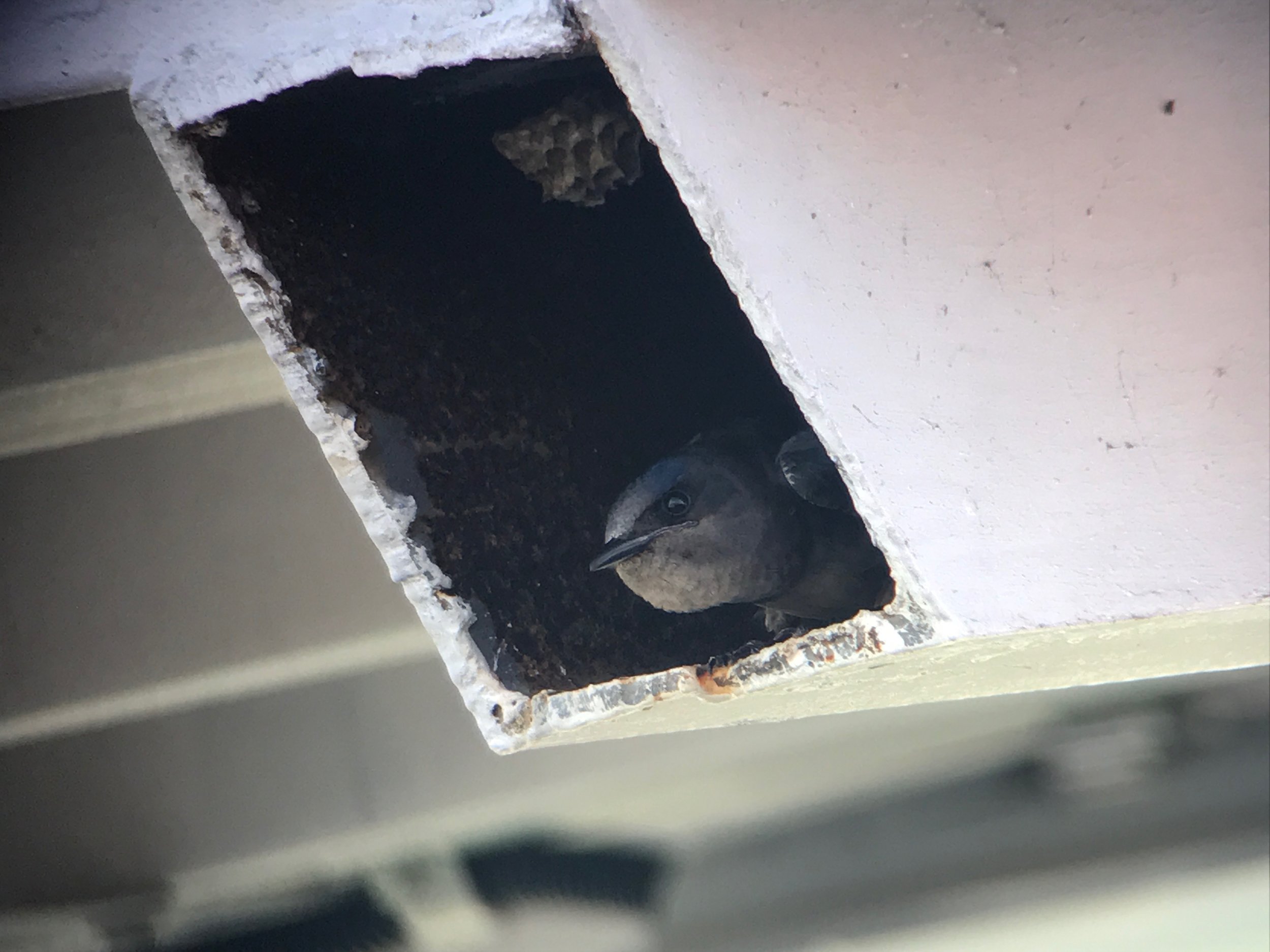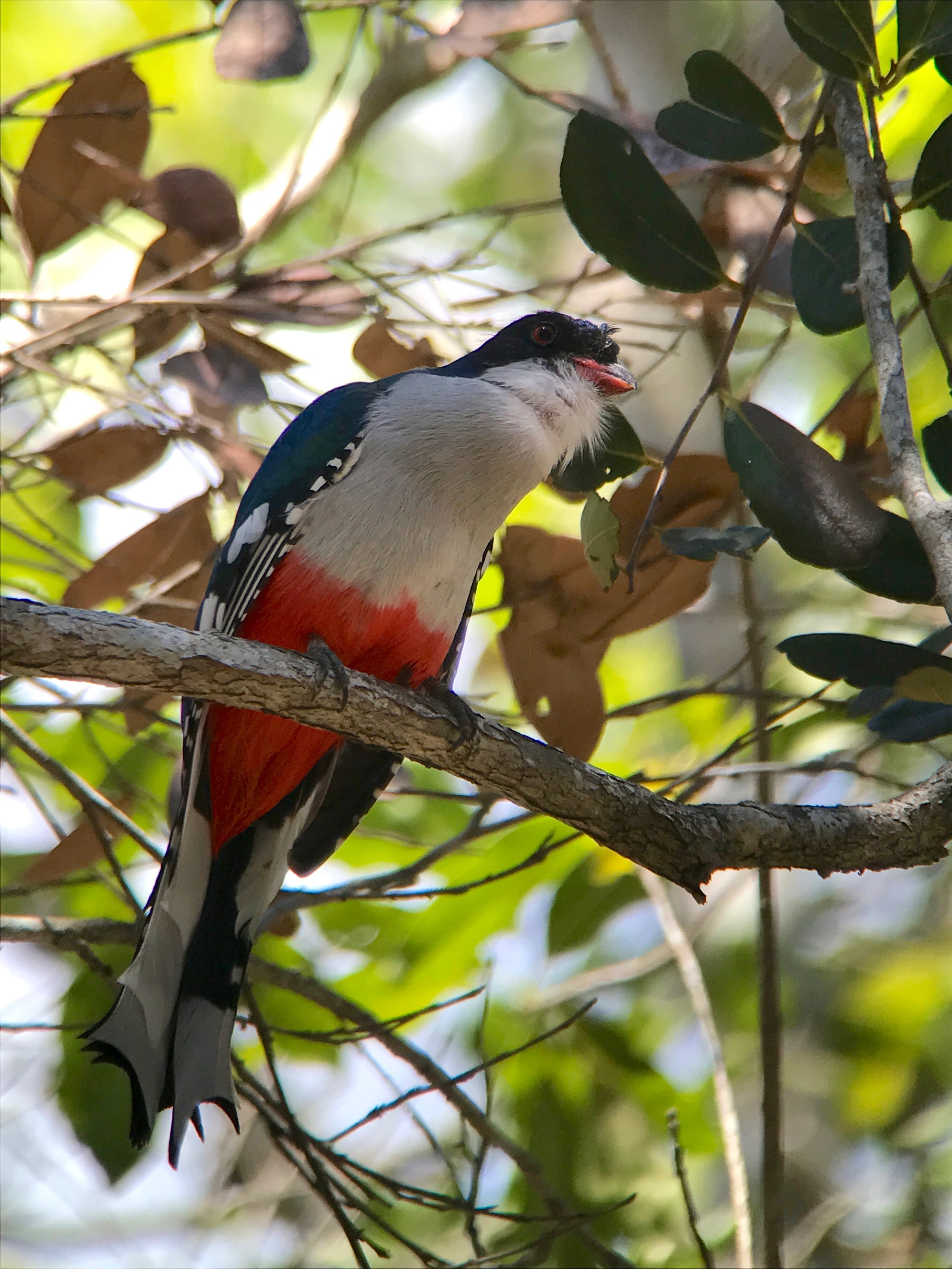After some fun times and barely birding in Old Havana, we met up with our main guide in Cuba, Hiram Gonzalez (pronounced "ear rahm" not they way we say Hiram in the US). Hiram is quite possibly one of the last people to see an ivory-billed woodpecker alive in Cuba. He's an ornithologist who specializes in endangered species on the island. If Zapata wren is your goal--he's the one you want to know to see one.
He's also one of the most colorful guides I've ever gone with. How often do you go out with a guide who points to your endemic lifer with his half finished cigarette? He speaks very good English with a heavy accent. It took me a minute to figure out that "janky bird" was giant kingbird. At night, he'd join us at the bar and school us in birds and the better rums. But he was always so excited to show us his birds which I'm sure he'd seen more times than I've seen a cardinal. Ever time he would exclaim, while wildly flailing his cigarette, "Look AT dat!!!"
Male Cuban martin.
We headed towards Las Terrazas to a plantation to get some of those Cuban endemics we'd been reading about so much. On the way we stopped for gas and got a lifer: Cuban martin. We had martins zooming over the roof of our hotel. Even though it was April, I wasn't sure if there still might be some male purple martins on the island and it's impossible to tell male purple martins from male Cuban martins. But at the gas station there was no doubt.
Female Cuban martin in a nest cavity, check out the wasp nest above her head.
Unlike purple martins, Cuban martins nest in holes in buildings--not the houses and colonies people in the United States have trained martins to use. These martins were using any hole or gap in the gas station. Cuba is know for several species that are endemic--spend their entire lives on the island. But martins fly away in winter and only breed here so their considered a breeding endemic. Kind of the way golden-winged warblers would be considered a breeding endemic to the North America.
We continued our journey and at the first stop in Las Terrazas, it was the "holy-shit-new-birds-everywhere" sensory overload time. That lovely point where you are afraid to focus on just one bird because you might not see the other new bird right behind you ever again. Many of the endemics we saw on the first stop ended up being birds we would see almost every day like Cuban trogon, Cuban tody and Cuban green woodpecker...getting actual photographs of them was another story.
Our very first bird was the Cuban national bird, the Tocororo or Cuban trogon. As we were watching Cuban oriole and Cuban green woodpecker flew over--to a nest.
Cuban green woodpecker.
The farm to see grassquits!
Clouds and mist moved in as well giving things a mysterious air. After our initial stop we headed to a nearby plantation where they were setting up to feed their chickens. However, domestic fowl are not the only birds to see. This is the spot to get cracker jack looks at grassquits.
Cuban grassquit.
I could show you images of grassquits but it's far more fun to watch video of them happing around. There were far more yellow-faced grassquits than Cuban grassquits but we got ample looks at both. These are now considered to be part of the tanager family and are related to Darwin finches.
I tried to get a picture of Flat Michelle with the grassquits, but they were having none of it.
So a local farmer was happy to oblige instead.









